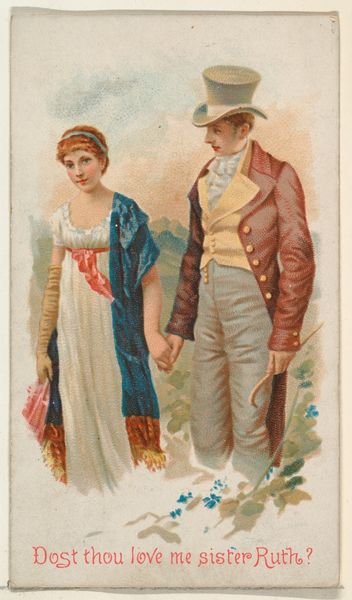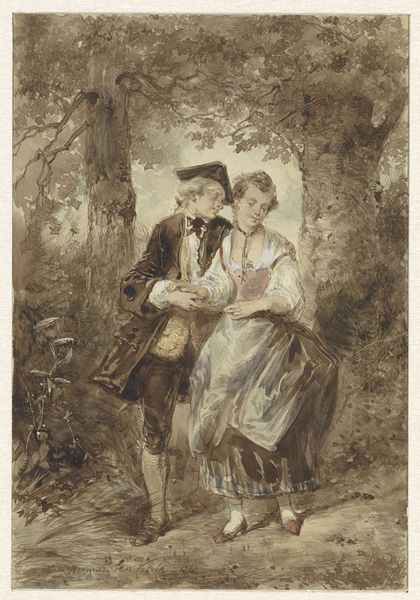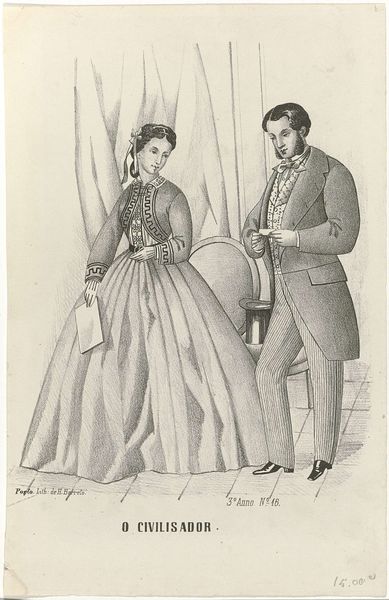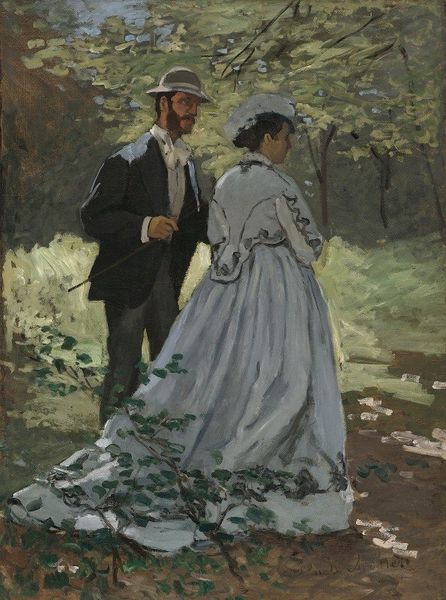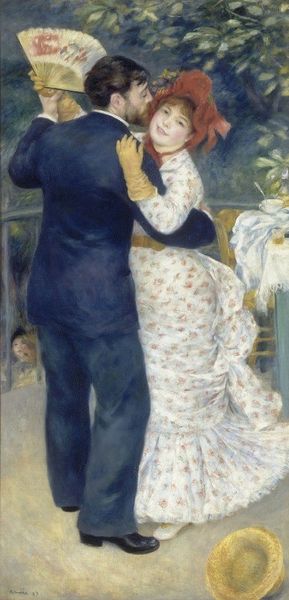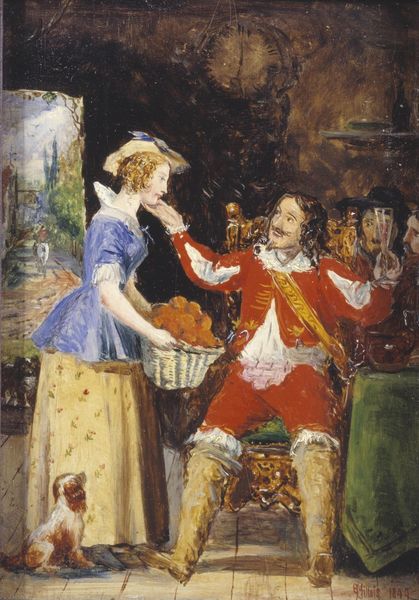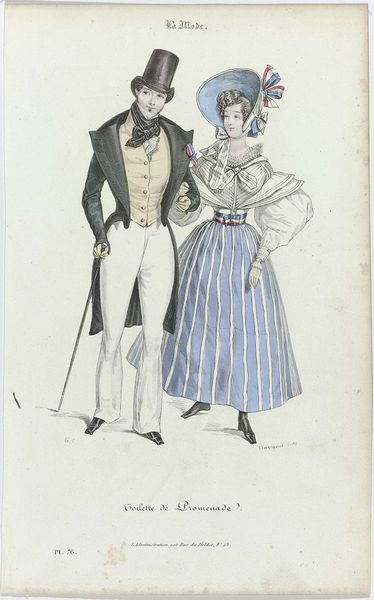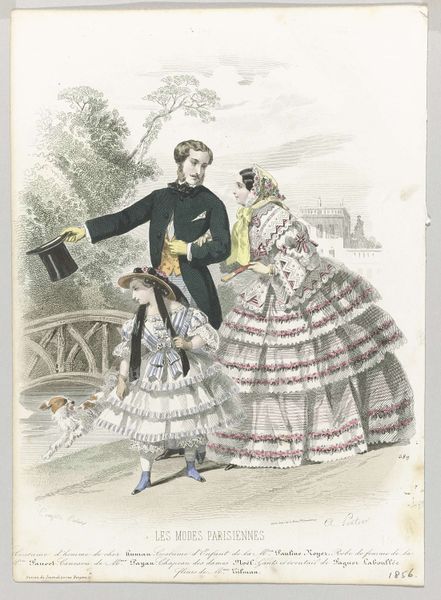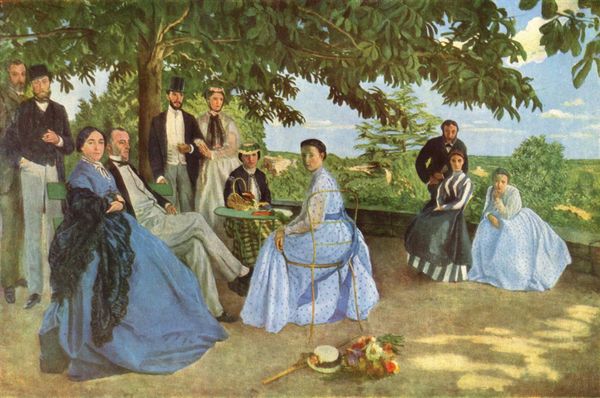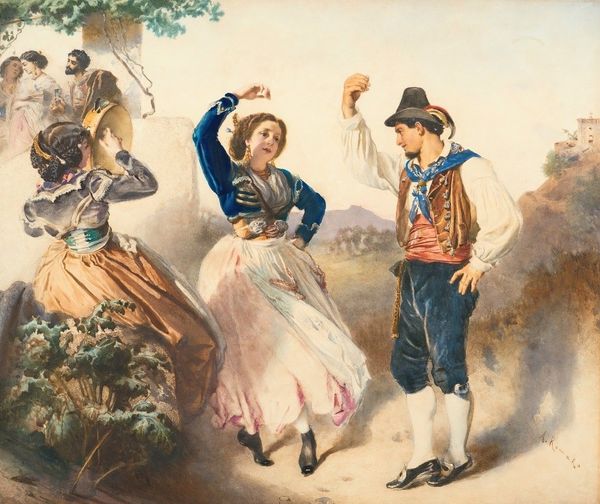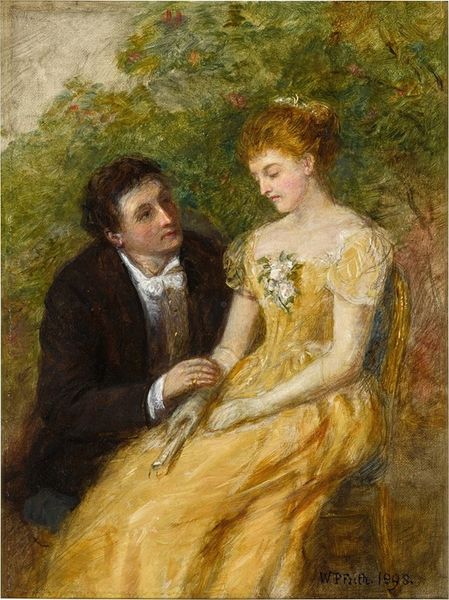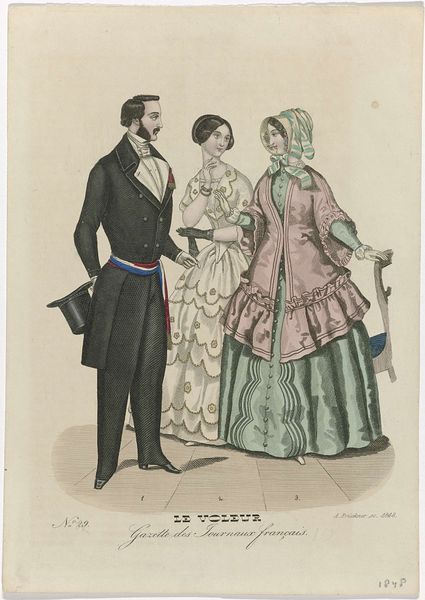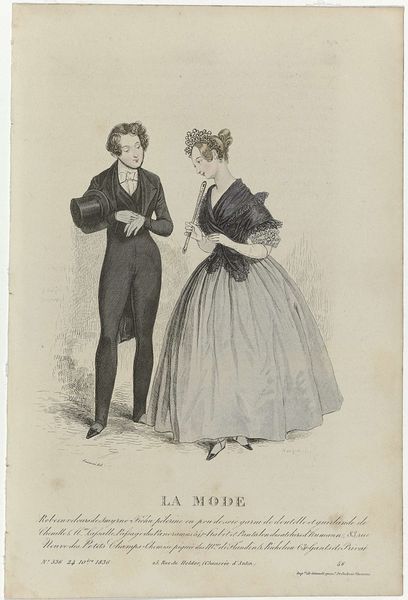
#
possibly oil pastel
#
oil painting
#
acrylic on canvas
#
underpainting
#
painting painterly
#
animal drawing portrait
#
lady
#
portrait art
#
watercolor
#
fine art portrait
#
digital portrait
Dimensions: 75 x 105 cm
Copyright: Public domain
Curator: Pierre-Auguste Renoir painted this piece, "Alfred Sisley and His Wife," in 1868. It now resides in the Wallraf-Richartz Museum in Cologne. Editor: My initial impression is one of constrained intimacy. The brushwork seems soft, but there's a tension in the couple's poses and the woman's averted gaze. It's more studied than spontaneous. Curator: Absolutely, Renoir's early style is still emerging here. Look at the context: portraiture in 1868 carried expectations of social representation, particularly for artists within the emerging Impressionist circle hoping to gain recognition through the Salon system. This wasn't just a casual snapshot of friends. Editor: True, and if you dissect the composition, you see that formality echoed. The figures are carefully placed—the diagonal of the wife's dress contrasting with the vertical lines of the background foliage, and that echoing pattern with the husband's black coat. The symbolism of color is key, the muted tones contrasting sharply to what seems to suggest an intensity of intimacy and emotional constraint. Curator: And consider their positioning within the art world—Sisley, the landscape painter, being presented alongside his wife. It reads almost as a statement about the role of the artist within society and, perhaps more subtly, the role of women in supporting artistic endeavors. Their intertwined hands suggest not just affection but also perhaps a partnership, maybe hinting at shared struggles and ambitions in a changing art scene. Editor: I see that, but what draws me in are the textural contrasts. The fluidity in the depiction of her gown versus the more rigidly defined lines of Sisley's formal wear. It's visually intriguing, hinting at their contrasting roles even within that social partnership. Curator: It’s fascinating how much Renoir packs into this early work—laying bare the power dynamics within both personal relationships and the larger artistic landscape. The piece prompts us to question how artistic partnerships and identities are formed, represented, and ultimately, remembered. Editor: Indeed, examining its structure alongside Renoir's future experiments, its restrained intimacy stands as a curious step. A testament to Renoir’s ability to synthesize so much subtle meaning through surface texture.
Comments
No comments
Be the first to comment and join the conversation on the ultimate creative platform.
